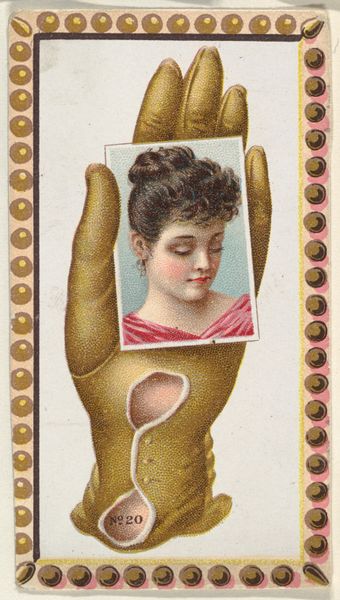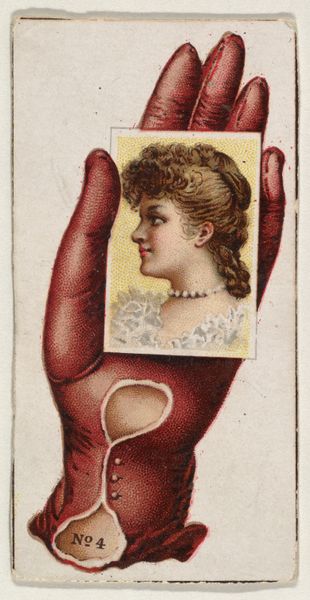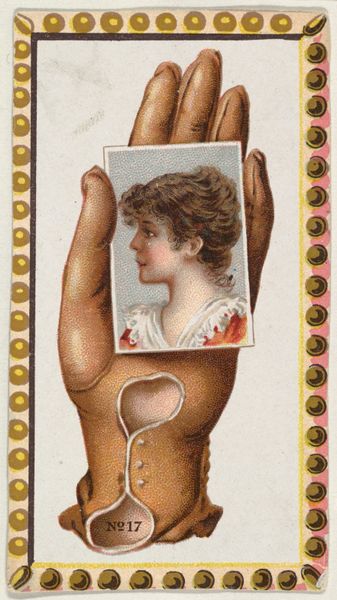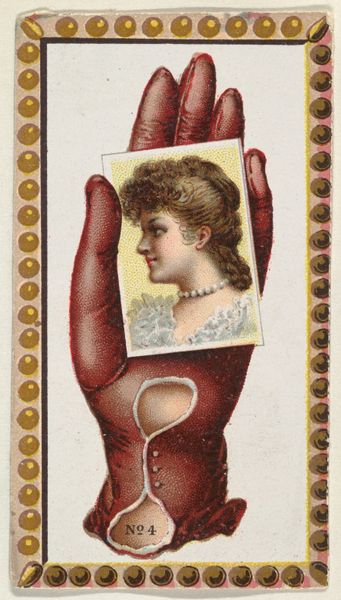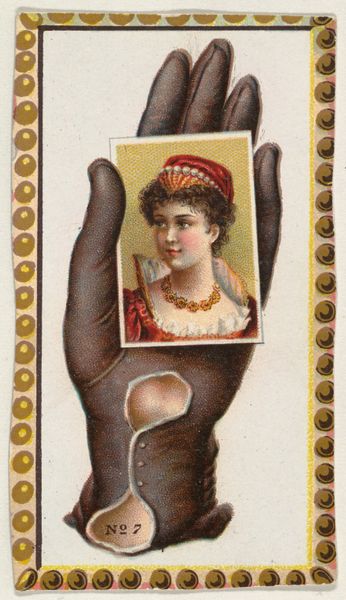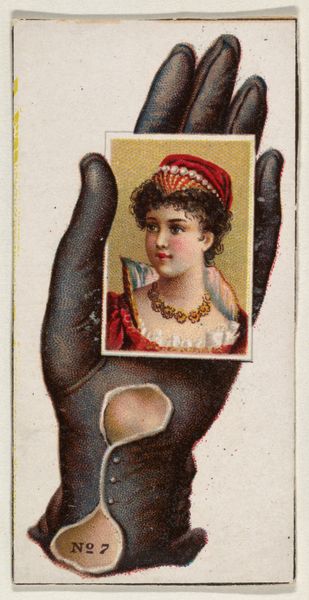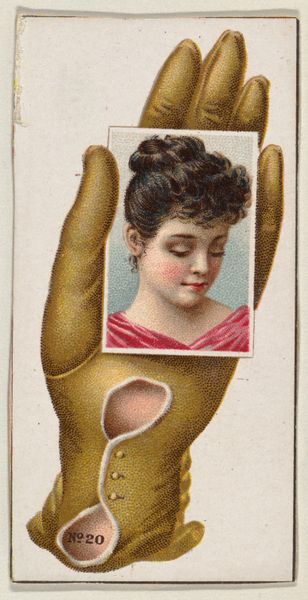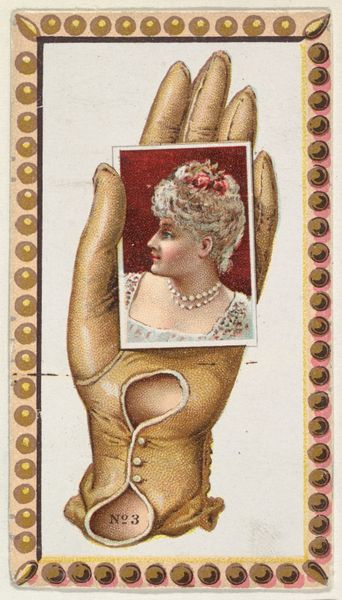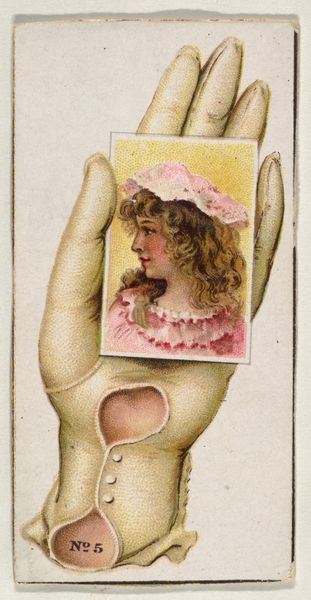
Card Number 10, cut-out from banner advertising the Opera Gloves series (G29) for Allen & Ginter Cigarettes 1885 - 1895
0:00
0:00
Dimensions: Sheet: 3 1/8 x 1 3/4 in. (8 x 4.5 cm)
Copyright: Public Domain
Editor: Here we have "Card Number 10, cut-out from banner advertising the Opera Gloves series (G29) for Allen & Ginter Cigarettes," dating from somewhere between 1885 and 1895. It's currently residing here at the Metropolitan Museum of Art. The card seems to be made of a combination of drawing, print, and coloured pencil elements. There's something both whimsical and a little unsettling about the oversized hand holding up this miniature portrait. What jumps out at you when you look at it? Curator: The immediate impact is definitely the somewhat bizarre composition, as you noted. But, I see this as an incredibly telling artifact of its time. Think about it: late 19th century, industrialization booming, a growing middle class with disposable income, and a surge in advertising. These cigarette cards weren't just about selling tobacco. They were about creating aspirational images, linking consumption with a sense of sophistication and beauty. How do you see the portrait within that context? Editor: That's a great point. So the woman isn't just a random portrait, but carefully selected to evoke a specific ideal. She seems...demure, perhaps? Was that part of the appeal? Curator: Absolutely. Demure, respectable, beautiful in a very particular, almost doll-like way. These images were circulated widely, shaping public perceptions of beauty and femininity. The “Opera Gloves series” itself suggests luxury and performance, further tying smoking to a certain social status. What about the reference to "Ukiyo-e?" Does that suggest another connection? Editor: Hmm, the border maybe? I hadn't thought of that before, but that's very astute. Were these cards intended to seem worldly? Curator: In a way, yes. Think about how the inclusion of "exotic" or foreign visual elements might have added to the brand’s appeal, suggesting that the consumer was sophisticated and cosmopolitan. These small cards acted as tiny windows into a world carefully curated by the company. They become quite powerful vehicles for transmitting cultural values and social hierarchies. Editor: This is fascinating. I hadn't really considered how much these little advertisements can tell us about society at the time. It’s so much more than just selling cigarettes. Curator: Exactly! It reminds us to always look at art – even commercial art – as deeply embedded within its cultural and historical context. There are so many stories layered into this single image.
Comments
No comments
Be the first to comment and join the conversation on the ultimate creative platform.
